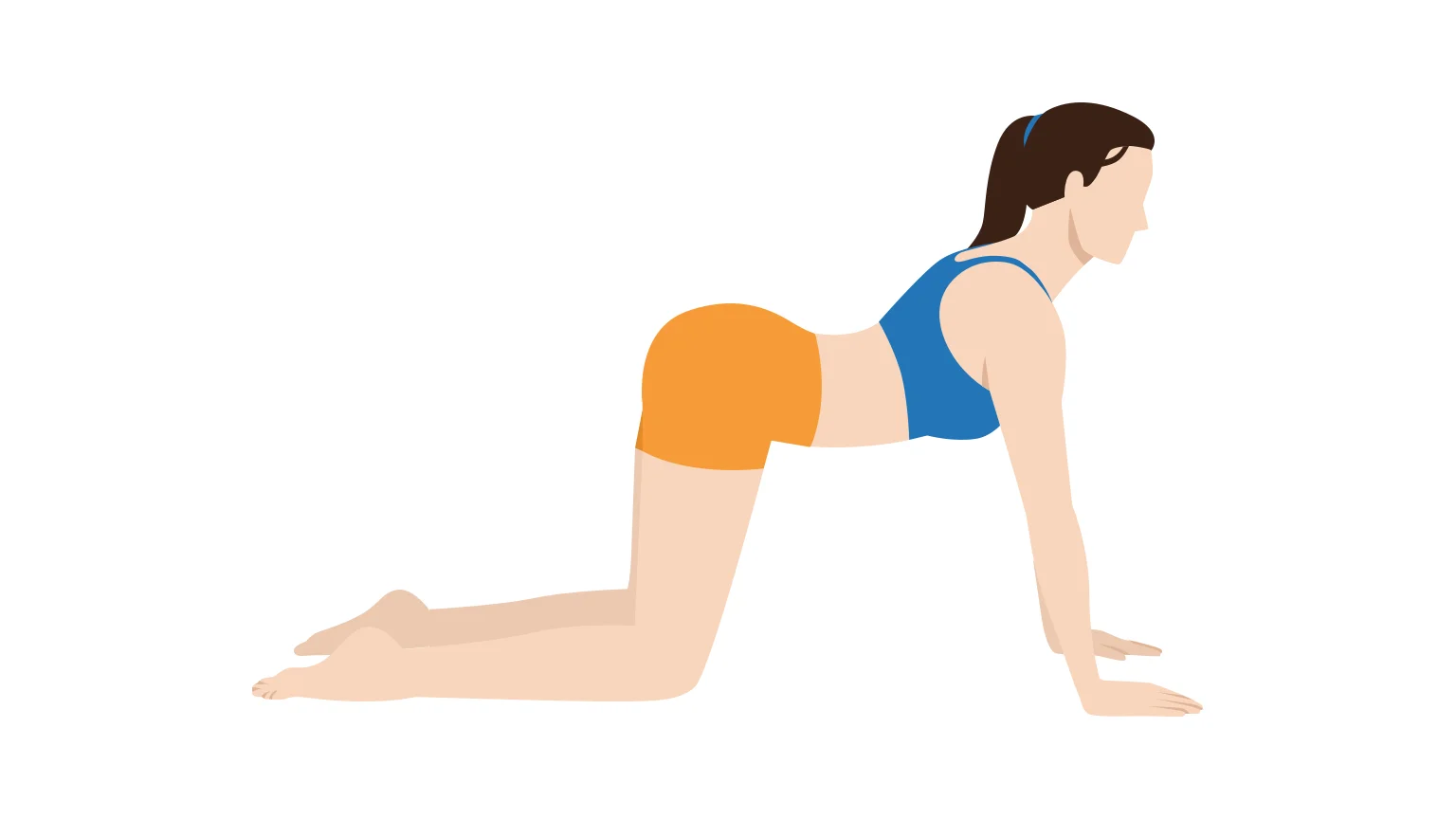
The Cow Pose, also known as Bitilasana, is a prone-position yoga pose. It’s a gentle, accessible pose, often combined with the Cat Pose in Vinyasa flow yoga. In the Cow Pose, you kneel down onto your hands and knees, with your back in a neutral or slightly arched position. You then lift up your chin to direct your gaze upwards.
- Position: Prone.
- Stretched body parts: Stretches your lower back, hips and abs muscles. When you raise your head up, it also stretches your neck and chest slightly.
- Benefits: The Cow Pose gently stretches your spine and muscles in your back. This can help alleviate tension in your upper back and shoulders, particularly when paired with the Cat Pose.
- Symbolism: The Cow and Cat Pose are often combined into a flow movement, often called the Cat-Cow. The relaxed state, the Cow Pose, is said to resemble the shape of a cow. In Hindu philosophy, the cow is associated with life and sustenance.
- Similar poses: Cat Pose (Marjaryasana), Child’s Pose (Balasana), and Downward-Facing Dog (Adho Mukha Svanasana).
Meaning of Bitilasana
The name “Bitilasana” is derived from two Sanskrit words:
- “Bitila” means “cow”; and
- “Asana” means “pose”.
Together, we get the name “Bitilasana” which translates literally to “Cow Pose”.
The pose gets its name because when you perform it, your body takes the shape of a cow, with the straight back and raised head. Cows in Hindu philosophy, from which yoga originates, are considered sacred and are often associated with life and sustenance.
How to do The Cow Pose

- Kneel down on both knees and rest on your hands is a ‘tabletop’ position. Your knees should be directly below your hips, and your wrists, elbows and shoulders should be lined up and at a right angle to the floor.
- As you inhale, lower your belly slightly and raise up your chest to create a gentle curve in your lower back.
- Lift up your head and keep your gaze directly forwards.
- As you exhale, reverse the move and return to the neutral position.
- Repeat for 10-15 breaths.
Variations
- For an additional stretch: While in the Cow Pose position, try to extend one of your legs straight back, keeping your extended foot flexed and toes touching the ground.
- More challenging pose: Once you’ve extended your leg, try lifting it off the ground. This variation requires more balance skill.
- Additional back stretch: Once in the Cow Pose position, try walking your right hand forwards slightly so that your torso bends slightly to the left. This will stretch the left side of your body. Then repeat for the other side of your body.
Tips
- Ensure your wrists are positioned directly under your shoulders. This will help you distribute your weight evenly across both arms.
- Pay attention to your neck position. Look straight ahead or slightly upwards without straining your neck, and keep your neck in line with your spine. Avoid bending or twisting your neck to one side.
- Avoid this pose if you have a neck or knee injury, or any other medical condition that may cause a complication.
Prep poses
- Child’s Pose (Balasana) – In Balasana, you are in a folded position with your upper body over your legs, and your forehead rested on the mat. This pose allows you to calm your mind, gently stretch your back and prepare yourself for more challenging postures.
- Easy Pose (Sukhasana) – This is another beginner-friendly pose that gently stretches your ankles, knees and hips. Being a seated pose, it primarily targets your lower body, whereas The Cow Pose stretches your spine and opens up your chest.
- Cat Pose (Marjaryasana) – The Cow Pose and Cat Pose are often paired together into a Cat-Cow sequence. In the Cat Pose, your back is arched upwards, giving you a rounded back, whereas in the Cow Pose, your back is arched down towards the floor. These complementary movements provide different stretches to your spine and lower back.
